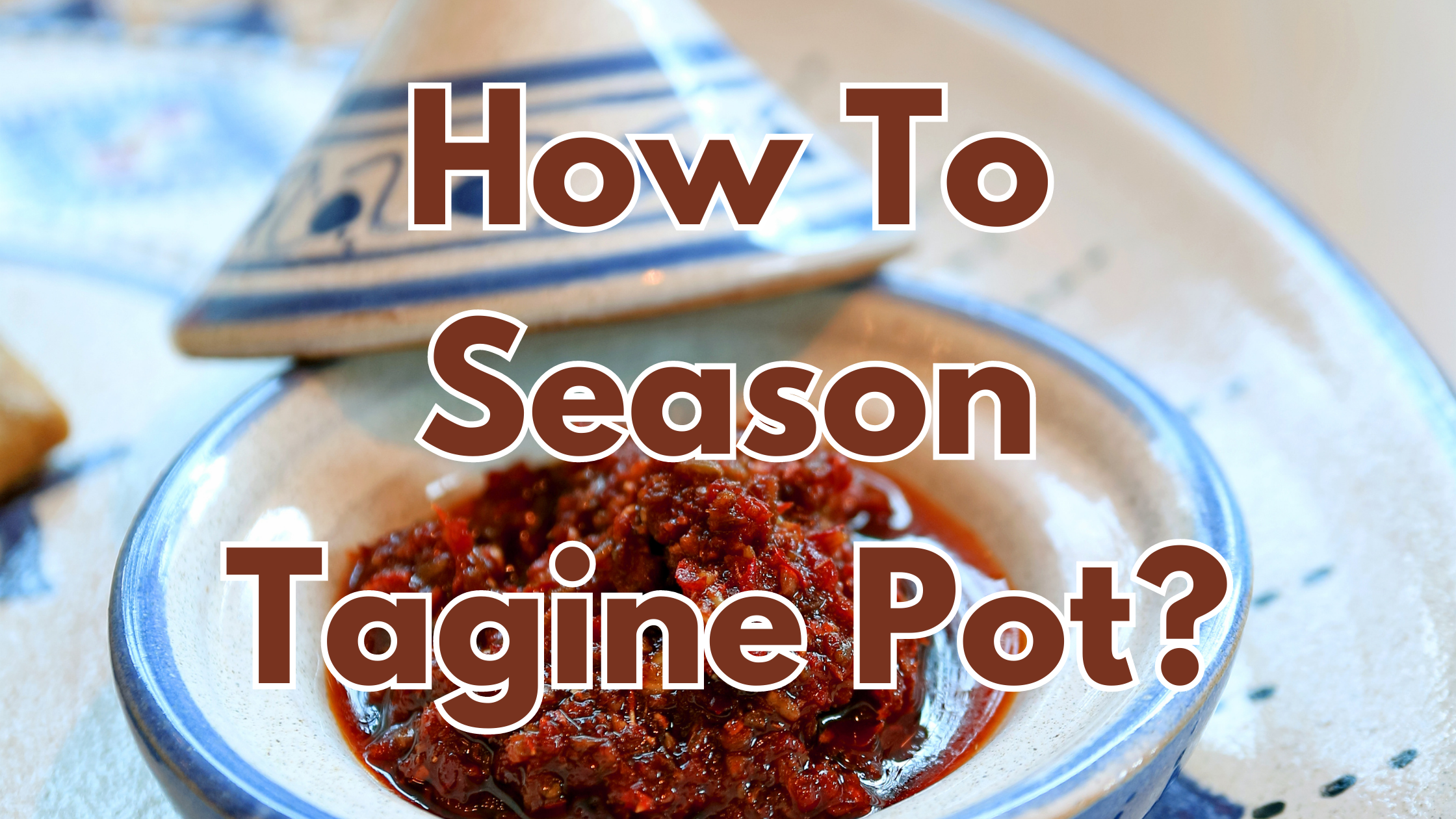Hey there, fellow culinary adventurer!
Have you ever wondered about the magical vessel behind some of the most tantalizing Moroccan dishes? Well, let me introduce you to the enigmatic Tagine pot – a true gem in the world of cooking.
Picture this: a cone-shaped pot that seems to have stepped right out of an ancient story, designed to conjure up flavors that dance on your taste buds.
That’s the Tagine pot! And believe me, it’s more than just a pretty piece of cookware – it holds the secrets to authentic Moroccan cuisine.
Now, you might be thinking, “What’s the big deal? It’s just a pot, right?” Ah, but that’s where you’re mistaken, my friend.
Seasoning a Tagine pot is an art in itself – a centuries-old tradition that infuses the pot with an alluring aroma enhances the flavors of your dishes and ensures its longevity.
In this delightful guide, we’re on a mission to unravel the mysteries of seasoning a Tagine pot.
We’ll walk hand in hand through the steps, making sure you get it just right, so you can bring the rich, exotic tastes of Morocco straight to your kitchen.
So, dust off that Tagine pot, get ready to embark on a flavorful journey, and let’s dive into the captivating world of Moroccan cuisine.
Together, we’ll master the seasoning process and unlock a whole new level of cooking finesse!
Are you ready?
Great! Let’s get started.
How To Season Tagine Pot?
To season a Tagine pot, follow these steps:
1. Unbox and inspect the pot for defects or impurities.
2. Clean the pot to remove dust and manufacturing residues.
3. Soak the pot in water for proper absorption during seasoning.
4. Choose a seasoning oil like olive oil or vegetable oil.
5. Coat the pot’s interior with a thin layer of the chosen oil.
6. Heat the pot in an oven or stove at a low temperature for the initial seasoning.
7. Monitor the heating process to avoid cracks or damage.
8. Allow the pot to cool down and inspect the results.
9. Repeat the seasoning process multiple times for better results.
10. Let the pot cool down after each seasoning round.
11. Check for areas that might need additional seasoning.
12. Evaluate the improvement in the pot’s appearance and texture.
Related: Do Tagine Pots Go In The Oven?
Understanding Tagine Pots
The traditional materials used for making Tagine pots
Let’s take a moment to appreciate the craftsmanship behind the Tagine pot. Traditionally, these pots are lovingly crafted from two primary materials: clay and cast iron.
The clay Tagine is a true reflection of Moroccan culture, with its rustic charm and earthy appeal.
On the other hand, the cast iron Tagine boasts a sturdier construction, perfect for modern-day kitchens seeking a durable and versatile option.
Each material lends its unique character to the cooking process. The clay Tagine possesses excellent heat retention and even distribution, creating a harmonious environment for your ingredients to mingle and meld their flavors.
As for the cast iron Tagine, it’s a master of heat preservation, ideal for long, slow-cooking sessions that extract the best of every ingredient.
The unique design and functionality of the Tagine pot
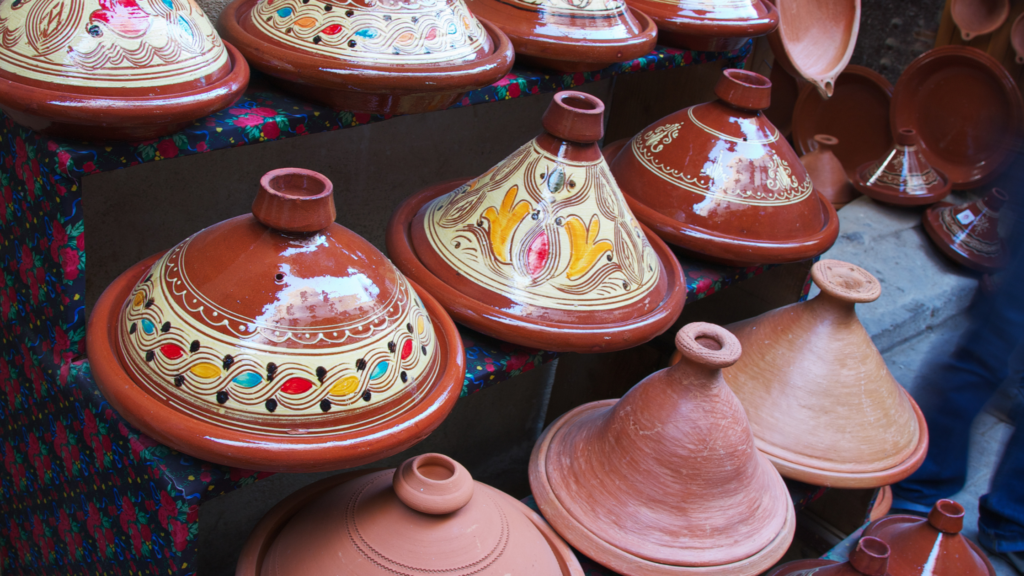
Here’s where the Tagine pot truly shines – its ingenious design!
Imagine a tall, cone-shaped lid, sitting proudly on a wide, shallow base.
This clever arrangement serves a purpose beyond aesthetics.
The dome-shaped lid captures the steam rising from the simmering goodness below, condensing it into droplets that gently rain back onto the food, infusing it with a burst of moisture and flavor.
It’s like a natural seasoning mechanism, keeping your dishes tender and succulent, without you having to lift a finger.
But there’s more!
The conical lid also helps to regulate the cooking temperature, ensuring that your meals cook slowly and evenly, developing those heavenly flavors that make Moroccan cuisine so remarkable.
The benefits of using a seasoned Tagine pot in cooking
Now, you might be wondering, “Why all this fuss about seasoning a Tagine pot? Can’t I just use it straight out of the box?”
Ah, my friend, here’s where the magic happens. Seasoning your Tagine pot is like unlocking the gateway to an exquisite culinary experience.
As you build up those layers of seasoning, the Tagine pot becomes more than just a cooking vessel – it becomes your flavor enhancer, your taste curator, and your kitchen confidante.
The seasoning process not only imparts a beautiful patina to the pot but also creates a non-stick surface that brings out the best in your ingredients.
Moreover, a seasoned Tagine pot breathes life into your dishes, elevating their taste profiles to new heights.
The delicate aromas of carefully chosen spices intermingle with the natural flavors of the food, resulting in a symphony of tastes that’ll leave your guests asking for your secret recipe.
And guess what? Seasoning isn’t just about culinary prowess; it’s about sustainability too!
A well-seasoned Tagine pot develops a natural protective layer that not only prevents rust but also ensures its longevity, making it a cherished family heirloom for generations to come.
So, as we dive deeper into the art of seasoning, prepare to witness the transformation of a humble pot into a culinary masterpiece – your very own Tagine pot, ready to take your taste buds on an unforgettable adventure!
Preparing the Tagine Pot for Seasoning
Unboxing and inspecting the Tagine pot for any defects or impurities

Congratulations, you’ve got your hands on a magnificent Tagine pot!
Now, before we embark on our seasoning journey, let’s give it some love and attention.
Take a moment to unbox your new treasure and give it a thorough inspection.
Look for any tiny imperfections or hairline cracks that might have occurred during transit. While these little quirks can add character to your pot, larger defects might affect its performance.
Don’t worry; most reputable sellers ensure proper packaging, so chances are your pot is in pristine condition. But it’s always a good idea to double-check – better safe than sorry!
Cleaning the Tagine pot to remove any dust or manufacturing residues
Before we kickstart the seasoning process, we want our Tagine pot to be squeaky clean – no dust bunnies or lingering manufacturing residues allowed!
Gently wash the pot with warm water and a soft brush to remove any exterior dirt or impurities that might have settled during storage or shipping.
Avoid using harsh chemicals or abrasive cleaners, as they can damage the pot’s delicate surface. A little patience and a gentle touch are all you need to ensure your Tagine pot is spotless and ready to be seasoned.
Soaking the Tagine pot to ensure proper absorption of water during seasoning
Now, here comes the part that will help your Tagine pot become the superstar of flavors – soaking time!
But wait, it’s not just about dipping it in water; there’s a little science behind it.
Before you start soaking, remember that different materials require different soaking methods. For clay Tagines, immerse both the base and the lid in water for at least two hours.
This ensures that the porous clay can absorb the water thoroughly, preventing it from cracking when exposed to direct heat.
On the other hand, if you have a cast iron Tagine, you’ll want to season it a bit differently. Fill the pot with water, including the lid, and let it soak for about an hour.
This step helps the cast iron develop a protective layer and ensures the seasoning process works its magic.
Now, take a deep breath, and while your Tagine pot enjoys its refreshing soak, you can prepare yourself for the exciting seasoning process that lies ahead.
The transformation has already begun, and soon enough, your Tagine pot will be ready to bring Moroccan-inspired delights to your dining table!
The Seasoning Process
Choosing the right seasoning oil
Now comes the fun part – choosing the perfect seasoning oil to work its magic on your Tagine pot.
You might be tempted to go for the fanciest oil on the shelf, but let me tell you a little secret – simplicity is key here!
Opt for a high-quality, neutral-flavored oil like vegetable oil or sunflower oil. These oils do wonders in creating a smooth, non-stick surface without overpowering the delicate flavors of your future dishes.
You could also go the traditional route and use olive oil, especially if you’re keen on adding a subtle Mediterranean touch to your culinary escapades.
Whichever oil you choose, make sure it’s 100% pure – no blending with other oils or additives. Your Tagine pot deserves only the best, after all!
Coating the Tagine pot with a thin layer of the chosen oil

Alright, it’s time to get our hands a little oily – but trust me, it’s all worth it!
Take your chosen oil and gently coat the entire interior surface of the Tagine pot, including the dome-shaped lid.
A thin, even layer is all you need to start the seasoning process.
Think of it like giving your Tagine pot a little moisturizing spa treatment – we want it to feel loved and pampered.
The oil will seep into the pores of the clay or cast iron, setting the stage for a glorious transformation as it bonds with the surface.
Placing the Tagine pot in an oven or stove for the initial seasoning process
Now, we’re ready to unleash the alchemy of seasoning.
Place your oil-coated Tagine pot in an oven preheated to a low temperature (around 300°F or 150°C) or on a low flame on the stove.
This gentle heat encourages the oil to penetrate deeper into the pot, creating that lustrous seasoning we’re after.
Remember, patience is key! The initial seasoning process can take anywhere from 30 minutes to an hour, depending on the material and size of your Tagine pot.
Just think of it as the first step towards creating a culinary masterpiece that’ll leave your taste buds in awe.
Monitoring the heating process to avoid cracks or damage to the pot
While we’re on the path to Tagine pot perfection, let’s not forget to be vigilant.
Keep an eye on your pot during the heating process to avoid any unpleasant surprises, like cracks or damages.
Slow and steady wins the race – don’t rush the seasoning process by cranking up the heat. We want the oil to work its magic gently, without putting any stress on the pot.
After all, a little tender love and care go a long way in creating a seasoned Tagine pot that’ll stand the test of time.
Allowing the Tagine pot to cool down and inspecting the results
Phew! We’re almost there.
Once the initial seasoning process is complete, turn off the oven or remove the pot from the stove, and let it cool down at its own pace.
Avoid sudden temperature changes – remember, our Tagine pot has just undergone a beautiful transformation, and we don’t want to spoil it now!
Once your Tagine pot has cooled, it’s time for the moment of truth – inspecting the results of your seasoning efforts.
Admire that gorgeous sheen that has developed on the surface, giving your pot that charming allure.
And with each seasoning round, this patina will only deepen, enhancing the flavors of your future dishes.
Congratulations! You’ve successfully completed the initial seasoning process, and your Tagine pot is now one step closer to becoming the culinary superstar you’ve always dreamed of.
But wait, there’s more seasoning magic to come! So, roll up your sleeves, and let’s continue our journey to Tagine pot perfection.
Your taste buds are in for a treat!
Repeating the Seasoning Process
Understanding the importance of repeating the seasoning process multiple times
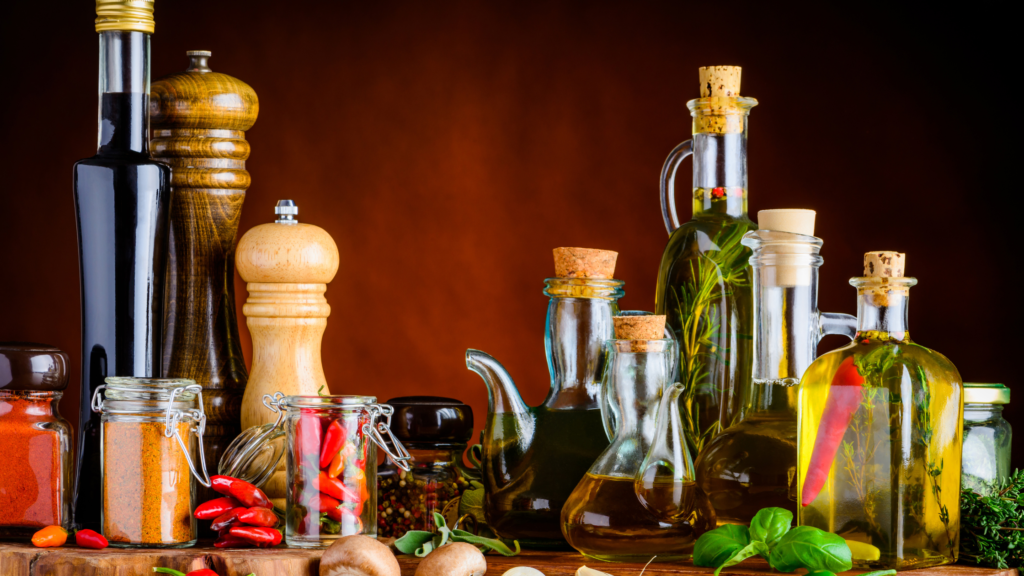
You know what they say – practice makes perfect!
The same holds true for seasoning your Tagine pot. One round of seasoning is fantastic, but we’re aiming for culinary excellence here, my friend.
That’s why we need to repeat the seasoning process multiple times.
Each round builds upon the previous one, deepening the bond between the oil and the pot’s surface.
As you repeat the process, the Tagine pot becomes even more seasoned and ready to unleash its full potential in the kitchen.
So, don’t be shy to give your Tagine pot some extra TLC.
With each round, you’re getting one step closer to achieving those mouthwatering Moroccan flavors that’ll have your guests begging for seconds.
Letting the Tagine pot cool down after each seasoning round
Ah, patience is truly a virtue in the world of seasoning.
After each round, it’s essential to let your Tagine pot cool down gracefully.
Just like a master chef needs time to let flavors meld together, your pot needs a breather too!
Allowing the Tagine pot to cool down gradually ensures that the seasoned layers settle and adhere firmly to the surface.
Rushing this cooling process might disrupt the harmonious bond we’ve worked so hard to create.
Take a moment to bask in the anticipation of what’s to come as your Tagine pot rests and rejuvenates for its next seasoning round.
Checking for any potential areas that require additional seasoning
Here’s where your keen eye comes into play. After each seasoning round, it’s time for a little inspection.
Check the entire interior surface of your Tagine pot, including the lid, for any areas that might need a little extra love.
You might notice tiny spots where the seasoning hasn’t fully developed, especially on the initial rounds. No worries!
Just apply a light coating of oil to those spots and let them catch up with the rest of the pot.
Remember, the seasoning process is all about creating an even, non-stick surface, so pay attention to every nook and cranny, ensuring your Tagine pot is ready to dazzle with its culinary prowess.
Evaluating the improvement in the Tagine pot’s appearance and texture
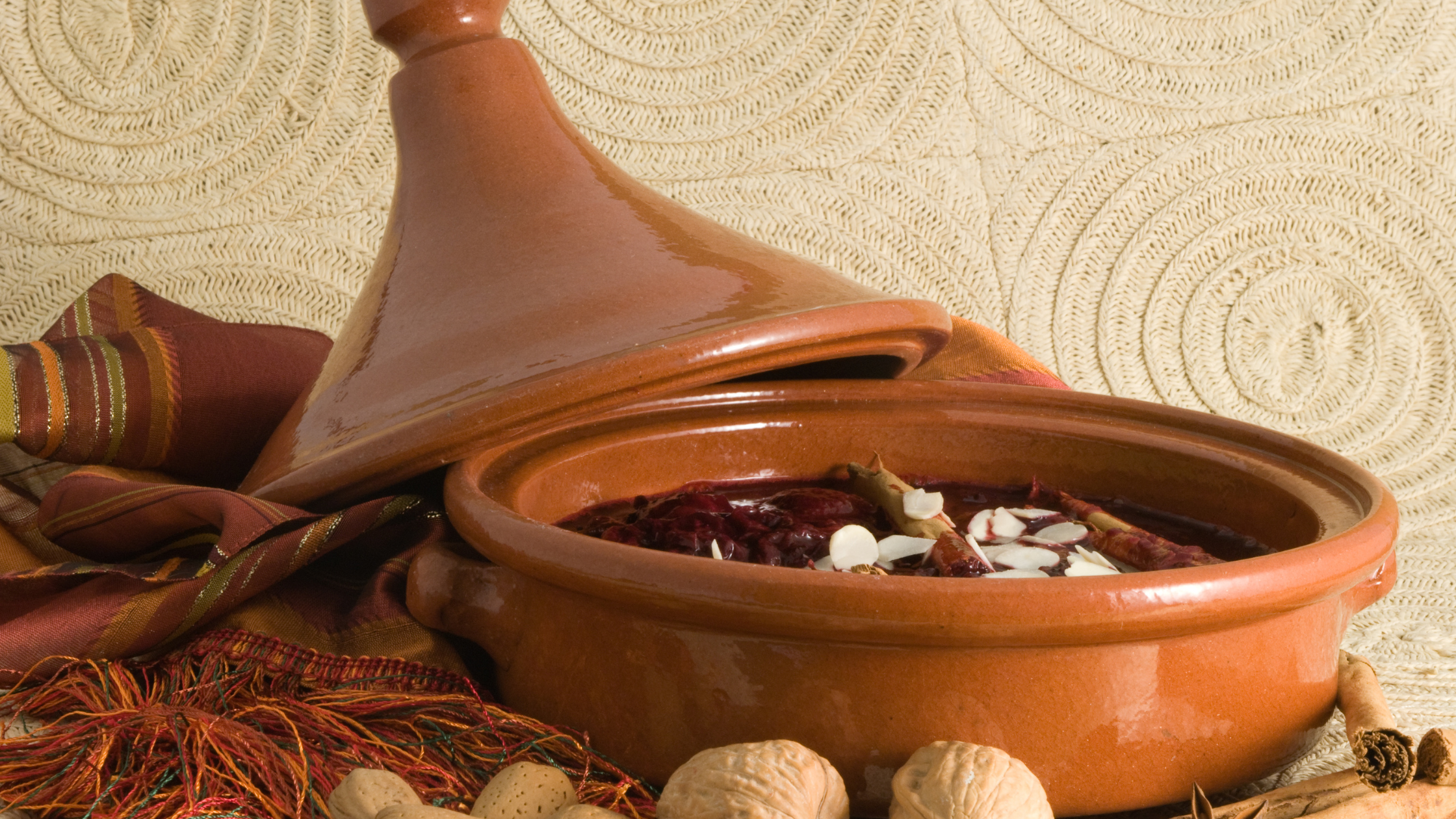
As you repeat the seasoning process, you’ll start to notice a transformation that goes beyond aesthetics.
Your Tagine pot will undergo a delightful metamorphosis, both in appearance and texture.
Each round deepens the color of the patina, lending the pot a unique, rustic beauty that’s a testament to its seasoned perfection.
And as you run your fingers along the interior, you’ll feel the velvety-smooth surface that whispers promises of effortless cooking and tantalizing flavors.
Step back and admire the progress you’ve made so far – a seasoned Tagine pot that’s a true work of art. But we’re not done yet!
Keep up the fantastic work, and soon, you’ll have a Tagine pot that’s ready to create culinary wonders fit for a Moroccan feast!
So, my kitchen companion, let’s press on to our next seasoning round. With each step, we’re bringing your Tagine pot closer to achieving its full potential.
Your taste buds are in for an enchanting experience, and your dishes will never be the same again!
Get ready to savor the fruits of your seasoning labor as we journey together to Tagine pot mastery.
Caring for Your Seasoned Tagine Pot
Tips for maintaining the seasoned surface of the Tagine pot
You’ve put in the effort, and your Tagine pot is now a seasoned superstar! But here’s the secret to keeping that magic alive – proper maintenance.
Taking care of your seasoned pot ensures that it continues to delight your taste buds for years to come.
First things first, avoid using harsh scrubbers or abrasive cleaning agents. A gentle touch is all you need to maintain that velvety-smooth surface.
Opt for a soft sponge or cloth and a mild dish soap to clean your Tagine pot after each use.
Another pro tip: after cleaning, dry your Tagine pot thoroughly, either by air-drying or with a soft towel. We want to keep moisture at bay to prevent any potential rust or damage to the seasoning.
Also, consider reserving your Tagine pot for slow cooking and simmering dishes, as it truly excels in these areas.
Avoid using it for high-heat searing or frying, as excessive heat might strip away the seasoning.
Lastly, don’t forget to give your Tagine pot a little love from time to time. Re-season it every few months or whenever you notice the patina getting thinner.
This occasional touch-up ensures that your pot stays in top-notch seasoning shape!
Proper storage techniques to prevent damage or chipping
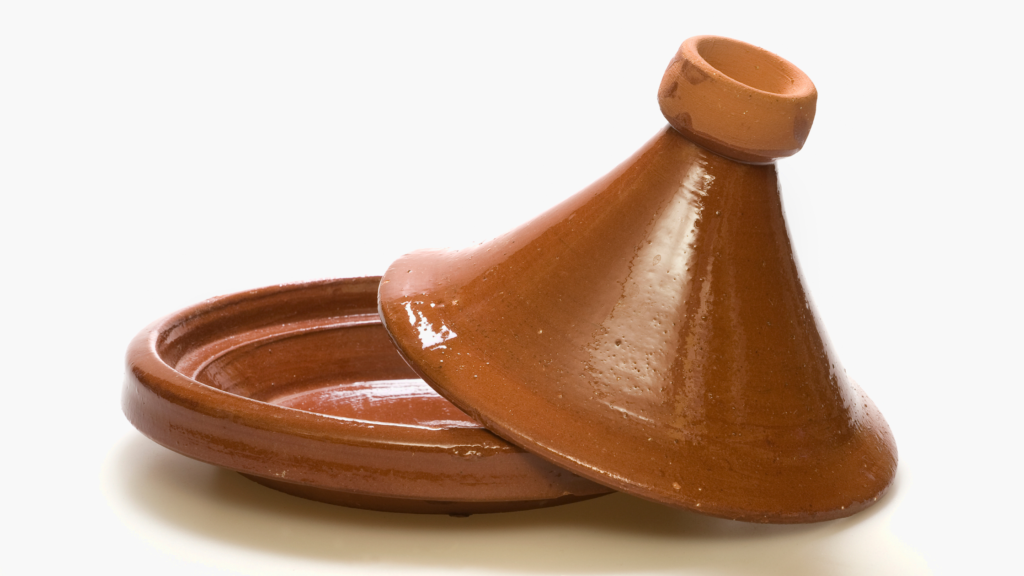
Your seasoned Tagine pot deserves a cozy home in your kitchen, but let’s make sure it’s well-protected from any potential harm.
When it’s not busy whipping up delectable dishes, consider these storage techniques to keep it safe and sound.
Always stack your Tagine pot with care – avoid piling heavy cookware on top of it, as this might lead to chipping or cracking.
Related: Does a Tagine Pot Have a Hole in The Top?
You can place a soft cloth or a silicone mat between stacked pots for added protection.
If you have a clay Tagine, consider placing a small cloth or paper towel between the base and the lid when storing to prevent them from sticking together due to humidity.
For long-term storage, you might want to consider covering your Tagine pot with a breathable fabric bag to shield it from dust and potential scratches.
Remember, your Tagine pot is like a treasured family heirloom, and with a little thoughtfulness, you can ensure its beauty and functionality last for generations to come.
Regular cleaning methods that preserve the seasoning
Let’s talk about cleaning – not the dreaded, time-consuming kind, but the easy, seasoning-preserving kind!
Maintaining that beautifully seasoned surface doesn’t have to be a chore, especially with the right approach.
After each cooking adventure with your Tagine pot, let it cool down a bit before diving into cleaning. Then, soak it in warm, soapy water to loosen any food residues gently.
Use a soft sponge or cloth to wipe away the remains, being careful not to disturb the seasoning.
Avoid using harsh chemicals or abrasive cleaners, as they can strip away the seasoned layers that we’ve worked so hard to build.
Stick to the gentle cleaning approach, and your Tagine pot will thank you for its continued culinary brilliance.
Remember, seasoning isn’t just a one-time deal – it’s an ongoing journey of flavors and memories.
By following these tips and taking care of your seasoned Tagine pot, you’ll ensure it remains your trusted kitchen ally, ready to whisk you away to the enchanting world of Moroccan cuisine with each and every dish you create.
Exploring Tagine Pot Recipes
Sharing a traditional Moroccan Tagine recipe
Now that you’ve mastered the art of seasoning your Tagine pot, it’s time to put it to good use!
And what better way to start than with a classic Moroccan Tagine recipe?
Picture this – tender chunks of succulent meat (or flavorful veggies if you prefer a vegetarian option) gently simmering in a medley of exotic spices, sweet dried fruits, and aromatic herbs.
The seasoned Tagine pot is the conductor of this symphony, infusing the dish with layers of rich flavors that dance harmoniously on your palate.
Here’s a delightful traditional Moroccan Tagine recipe to get your taste buds tingling:
Moroccan Lamb Tagine with Apricots and Almonds
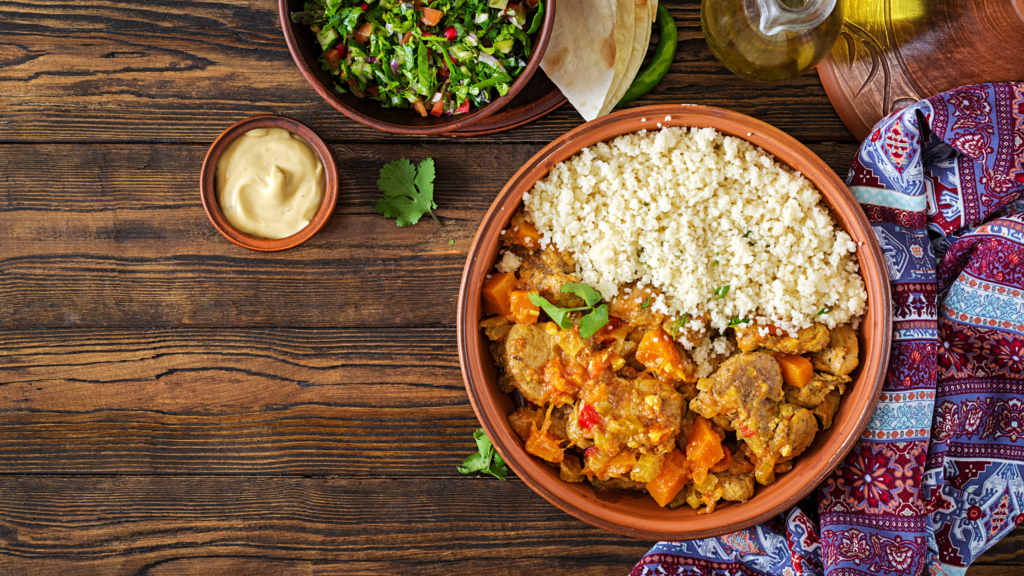
Ingredients:
- 1.5 lbs (700g) lamb shoulder, cut into chunks
- 1 large onion, finely chopped
- 3 garlic cloves, minced
- 2 tablespoons olive oil
- 1 teaspoon ground cumin
- 1 teaspoon ground coriander
- 1/2 teaspoon ground cinnamon
- 1/2 teaspoon ground ginger
- 1/4 teaspoon saffron threads (optional)
- 1 cup dried apricots
- 1/2 cup blanched almonds
- 2 cups chicken or vegetable broth
- Fresh cilantro, for garnish
- Cooked couscous or rice, for serving
Instructions:
- In your seasoned Tagine pot, heat the olive oil over medium heat. Add the chopped onion and minced garlic, sautéing until they become soft and translucent.
- Add the lamb chunks to the pot and brown them on all sides to seal in those delicious juices.
- Sprinkle in the cumin, coriander, cinnamon, ginger, and saffron (if using). Let the spices work their magic, filling your kitchen with irresistible aromas.
- Pour in the broth, and bring the mixture to a gentle simmer. Now, put the lid on your Tagine pot and let the enchantment unfold as the flavors meld together in harmony.
- After an hour or so, when the lamb is tender and bursting with flavor, add the dried apricots and blanched almonds to the pot. These delightful additions will infuse the dish with delightful sweetness and crunch.
- Continue simmering for another 30 minutes, allowing the apricots to plump up and the almonds to release their nutty essence.
- Once your Moroccan Lamb Tagine is ready, sprinkle some fresh cilantro on top for a burst of herbal freshness. Serve it over a bed of fluffy couscous or rice, and prepare for a taste sensation like no other!
The role of a seasoned Tagine pot in elevating the dish’s flavors
Now that you’ve savored the delectable wonders of this traditional Moroccan Tagine recipe, you’ll understand why seasoning your Tagine pot was worth every effort.
The seasoned surface of the pot acts like a conductor, orchestrating a symphony of flavors that elevates your dishes to a whole new level.
As the seasoned Tagine pot gently simmers the ingredients, it works its magic, enhancing the spices, mingling the sweet and savory notes, and infusing the dish with an irresistible depth of taste.
The result? A culinary masterpiece that captures the very essence of Moroccan cuisine.
It’s amazing how a little seasoning can transform a humble pot into a flavor powerhouse.
Your seasoned Tagine pot is now your culinary confidante, ready to add that special touch to your recipes, making them memorable and cherished experiences for everyone lucky enough to taste them.
Experiment with different ingredients and create your own recipes
But wait, there’s more!
The beauty of Moroccan cuisine lies in its versatility, and your seasoned Tagine pot is your passport to culinary creativity.
Embrace your inner chef and embark on a journey of exploration – experiment with various ingredients, spices, and aromatics to create your own unique Tagine recipes.
Try a vegetarian Tagine with chickpeas, sweet potatoes, and a burst of Moroccan Ras el Hanout.
Or how about a seafood Tagine with succulent prawns, clams, and a zesty twist of preserved lemons?
Don’t be afraid to mix and match flavors, guided by your seasoned Tagine pot’s enchanting prowess.
The possibilities are endless, and each dish you create will be a reflection of your own culinary prowess and the love you’ve poured into your cooking.
So, unleash your creativity, gather your favorite ingredients, and let your seasoned Tagine pot be your culinary companion on this tantalizing adventure.
From traditional classics to your very own innovations, your seasoned Tagine pot is your key to unlocking a world of flavors that’ll leave your guests in awe and your taste buds forever grateful!
Conclusion
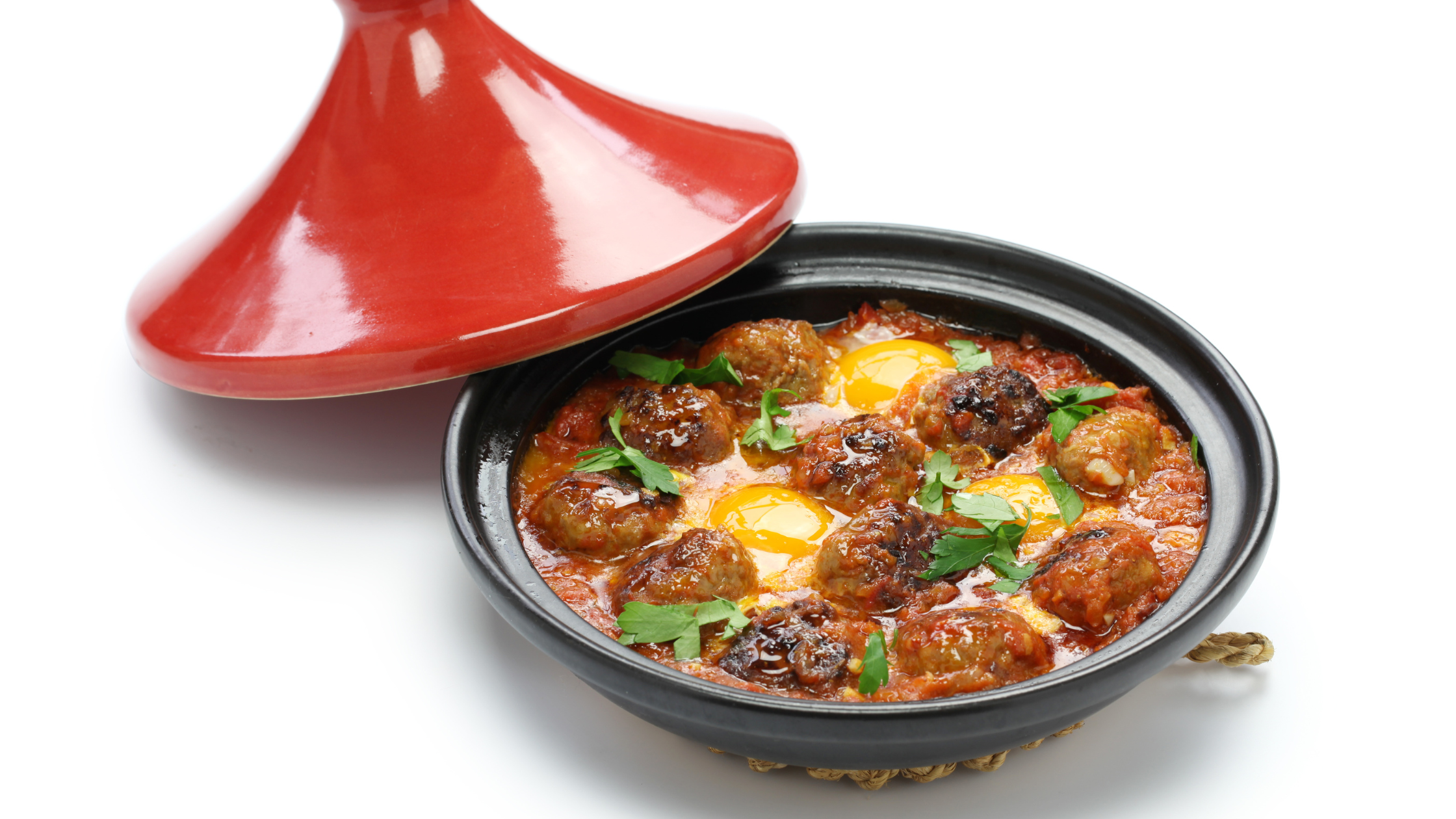
In conclusion, seasoning your Tagine pot is the secret ingredient to unlock a world of delightful culinary experiences.
The art of seasoning not only transforms a mere pot into a flavor powerhouse but also elevates your dishes to new heights of taste and aroma.
With each layer of seasoning, your Tagine pot becomes an essential companion in your kitchen, infusing your meals with the enchanting flavors of Morocco.
It’s a journey of love, patience, and creativity, and the rewards are nothing short of extraordinary.
Benefits of using a seasoned Tagine pot for authentic Moroccan cuisine
By seasoning your Tagine pot, you open the door to authentic Moroccan cuisine right in the comfort of your own home.
The seasoned surface of the pot becomes a canvas for the rich, fragrant spices, sweet dried fruits, and tender meats, creating dishes that capture the heart and soul of Moroccan cooking.
Your seasoned Tagine pot is the key to crafting culinary masterpieces that will transport your taste buds to the bustling markets of Marrakech and the enchanting alleys of Fez.
Embark on your Tagine cooking journey!
Now, dear culinary explorer, it’s time to embark on your Tagine cooking journey! Let your seasoned Tagine pot be your trusted companion as you unlock the hidden treasures of Moroccan cuisine.
Don’t be afraid to experiment, savor new flavors, and create your very own culinary magic.
Remember, the art of seasoning is not just about cooking; it’s about passion, tradition, and the joy of sharing meals with loved ones.
So, dust off that Tagine pot, gather your favorite ingredients, and let the seasoning begin!
With each seasoning round, you’ll witness your Tagine pot’s transformation into a seasoned superstar that will take your cooking to new heights.
Embrace the magic of Morocco in your kitchen, and soon enough, your guests will be transported to a world of exotic tastes and heartwarming hospitality.
Happy Tagine cooking, my fellow kitchen adventurer! May your seasoned Tagine pot be the enchanted vessel that brings joy, flavor, and unforgettable memories to every meal you create.
Bon appétit!

